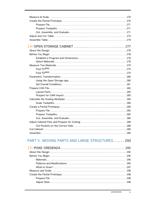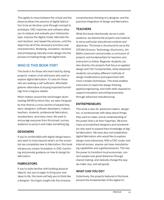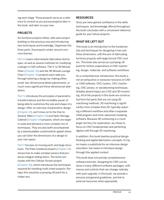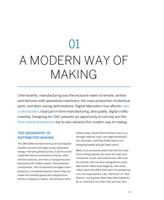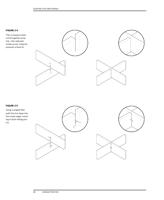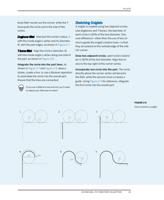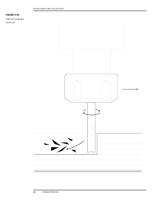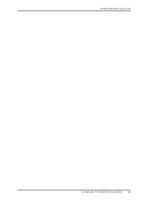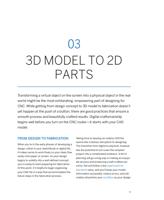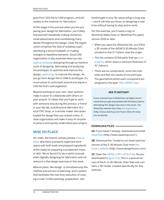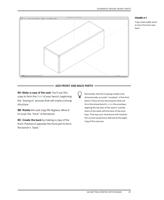
FIGURE 2-32
Rotational
STRUCTURES
FIGURE 2-33
Program types: Sit,
Work, Screen, Store
ROTATIONAL
A frame with four rotationally configured legs
and beams, which rotationally interlock at the
center of the structure. The central, interlock-
ing structure offsets the leg alignment, so legs
are orthogonally arranged, but none are in
plane with each other.
In a rotational structure, each of the four
independently adjustable legs counterbalan-
ces the opposing leg. In Figure 2-37, this light-
ens the structure’s appearance and allows the
legs to be easily set back from the table edge.
The Cat in Bag ii Table uses a rotational struc-
ture. Several other AtFAB pieces (see
Figure 2-43 and Figure 2-44) use this combi-
nation of counterbalance and centrally fixed
rotational frame to form floating, cantilevered
corners, which usually give furniture a lighter
appearance.
PROGRAMS
A program is a set of basic requirements, func-
tions, or accommodations that a design must
reconcile. A program gives a clear purpose to a
combination of joinery, assemblies, and struc-
tures.
“Program” is a term drawn from architecture,
where it refers to functional requirements of a
building, like the quantities, sizes, and types of
spaces. A program frequently includes site con-
ditions, construction budgets, energy effi-
ciency, detailed needs of occupants, and so on.
Though seemingly less complex than an archi-
tectural program, furniture still has functional
needs to address.
For AtFAB, we found that defining a program
helped further organize and aggregate the
structures to serve a wide range of activities.
We developed four basic programs to provide
adequate diversity in the collection. Beyond
this chapter, you’ll learn how adaptations, ergo-
nomic adjustments, and parametric customiza-
tions serve an array of standard programs, as
well as unanticipated needs.
58
DESIGN FOR CNC













